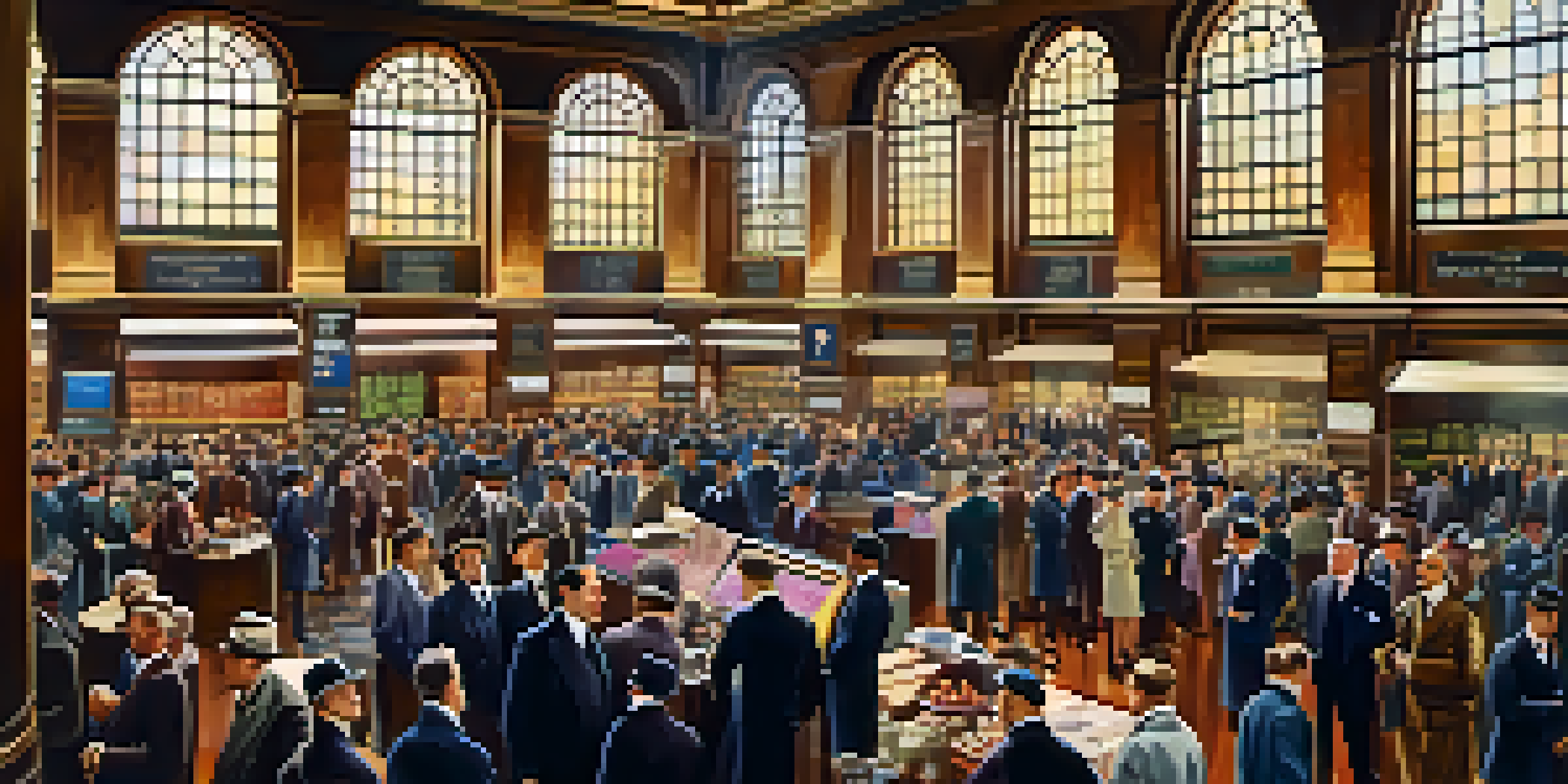The Evolution of Financial Markets Over the Last Century

Understanding Financial Markets: A Century of Change
Financial markets have undergone significant transformation over the last century, evolving from local trading spots to complex global systems. Initially, these markets were characterized by face-to-face transactions, where buyers and sellers would gather in bustling exchanges. As technology advanced, the introduction of electronic trading platforms revolutionized how transactions were executed, making them faster and more efficient.
The Rise of Stock Markets and Their Impact
The 20th century witnessed the meteoric rise of stock markets, which became central to the global economy. Stock exchanges, such as the New York Stock Exchange and NASDAQ, provided a structured environment for companies to raise capital and for investors to trade shares. This accessibility has allowed everyday individuals to participate in investing, which was once the domain of the wealthy elite.
Financial Markets Have Evolved
Over the last century, financial markets have transformed from local trading spots to intricate global systems influenced by technology and regulation.
The Great Depression: A Turning Point in Finance
The Great Depression of the 1930s was a pivotal moment for financial markets, exposing vulnerabilities in the existing system. This catastrophic event led to a loss of confidence among investors and prompted governments to step in with regulations. The establishment of the Securities and Exchange Commission (SEC) in the United States aimed to restore trust and ensure fair practices in the market.
Technological Advancements: The Digital Revolution
The late 20th and early 21st centuries have seen rapid technological advancements that transformed financial markets. The introduction of computers and the internet enabled high-frequency trading, where algorithms execute thousands of trades in milliseconds. This digital revolution has not only increased market efficiency but also introduced new risks and challenges, such as cybersecurity threats.
Globalization Shapes Investment
The interconnectedness of financial markets allows for cross-border trading, creating both opportunities and risks for investors.
Globalization: Connecting Financial Markets Worldwide
As markets became increasingly interconnected, globalization emerged as a defining feature of modern finance. Investors can now trade assets across borders with ease, creating opportunities and challenges alike. While this interconnectedness can lead to rapid capital flow and investment, it also means that financial crises can spread more quickly than ever before.
The Role of Regulation in Shaping Markets
Regulation has played a crucial role in shaping the evolution of financial markets, especially following crises. Rules and guidelines are put in place to protect investors and maintain market integrity. For instance, the aftermath of the 2008 financial crisis saw new regulations like the Dodd-Frank Act, aimed at preventing future collapses and promoting transparency.
Future Driven by Innovation
Emerging technologies like blockchain and artificial intelligence are set to redefine trading strategies and investment approaches in the coming years.
The Emergence of Alternative Investment Vehicles
In recent years, alternative investment vehicles like hedge funds, private equity, and cryptocurrencies have gained popularity. These options provide investors with opportunities outside traditional stocks and bonds, catering to diverse risk appetites and investment goals. However, they also come with their own set of complexities and risks that investors must navigate carefully.
Looking Ahead: The Future of Financial Markets
As we look to the future, financial markets are poised for further evolution driven by technology and changing investor preferences. Innovations such as blockchain technology and artificial intelligence are set to redefine trading and investment strategies. While the next century will undoubtedly bring new challenges, understanding the past helps us prepare for what lies ahead.